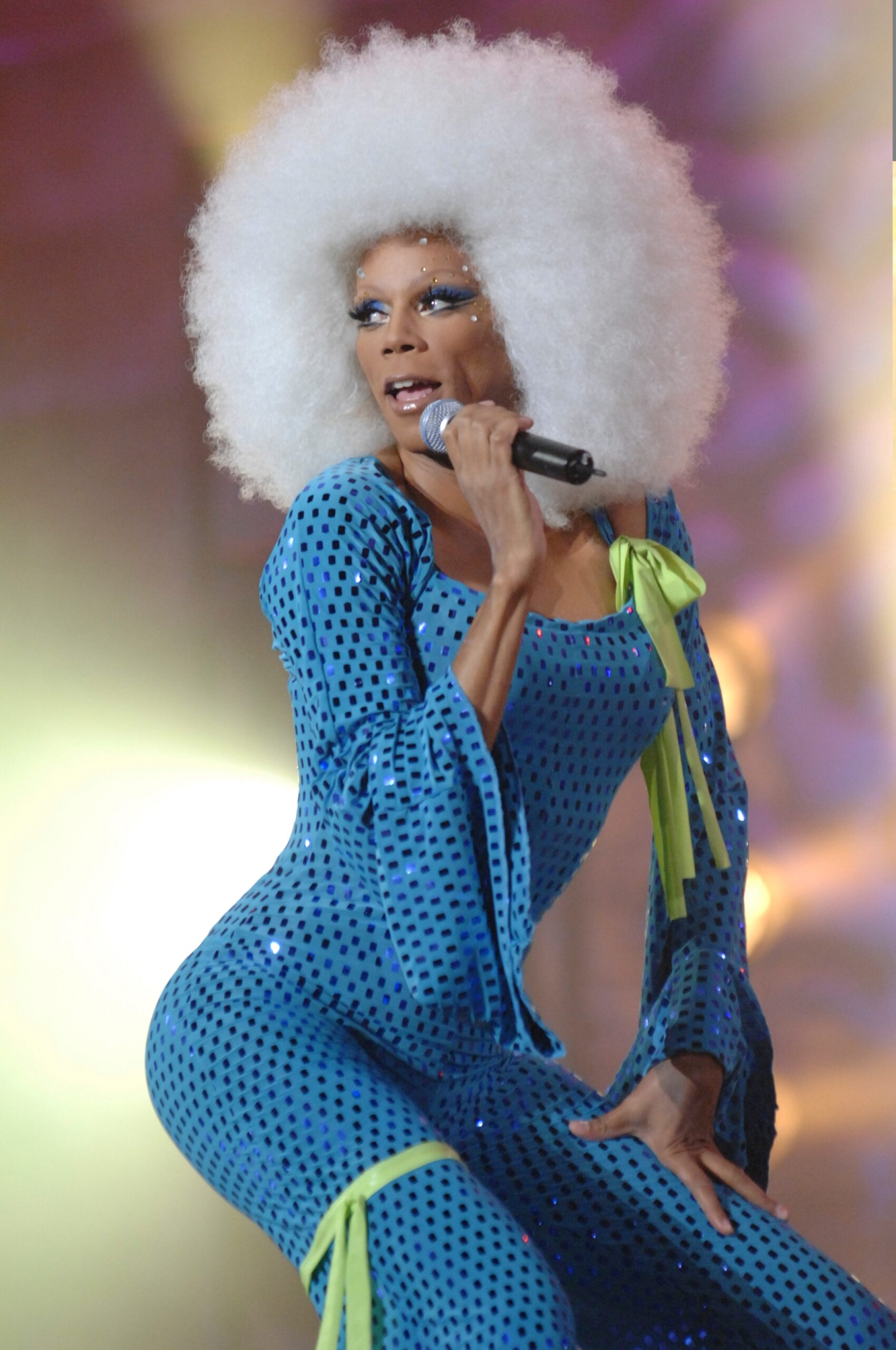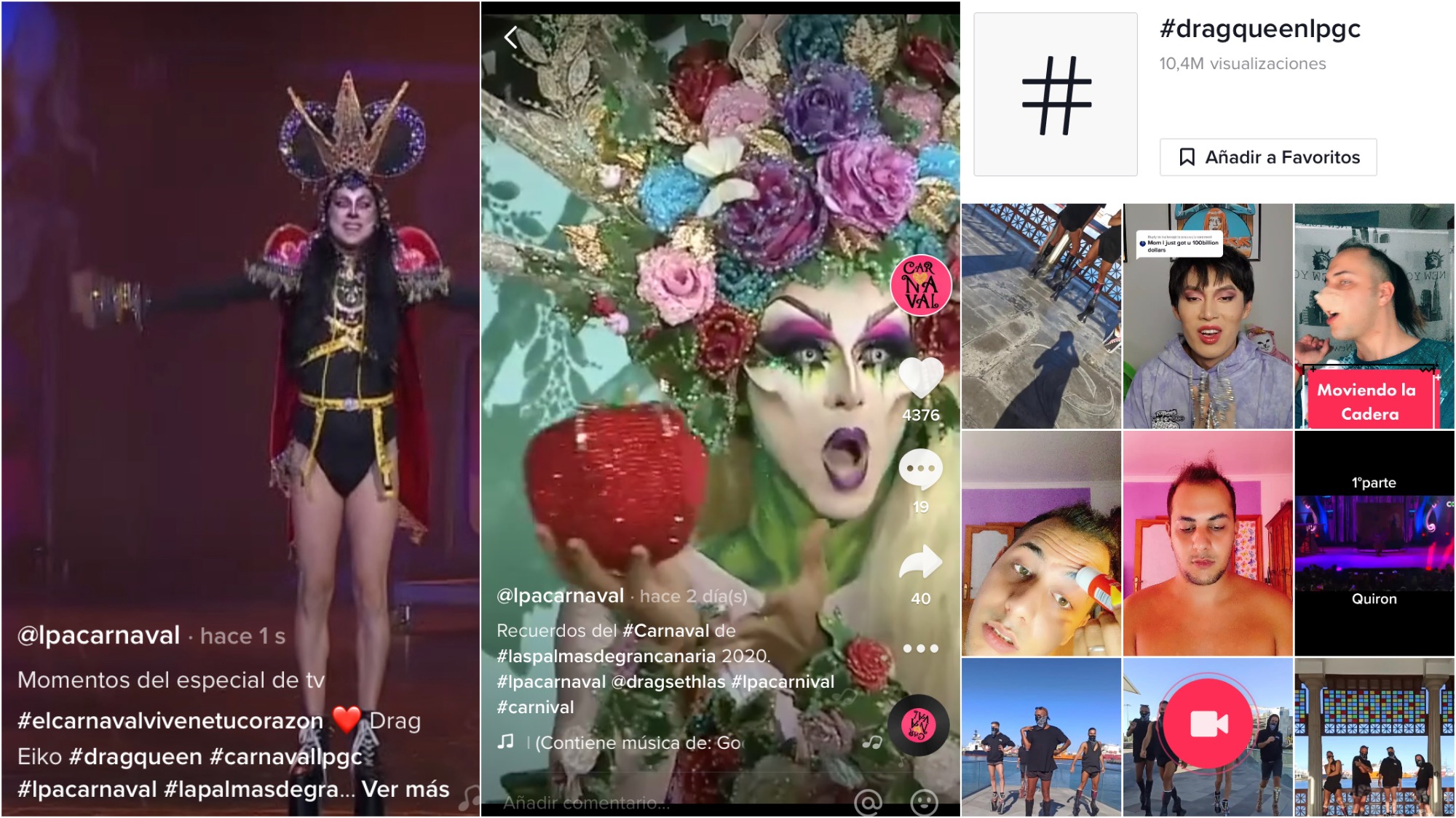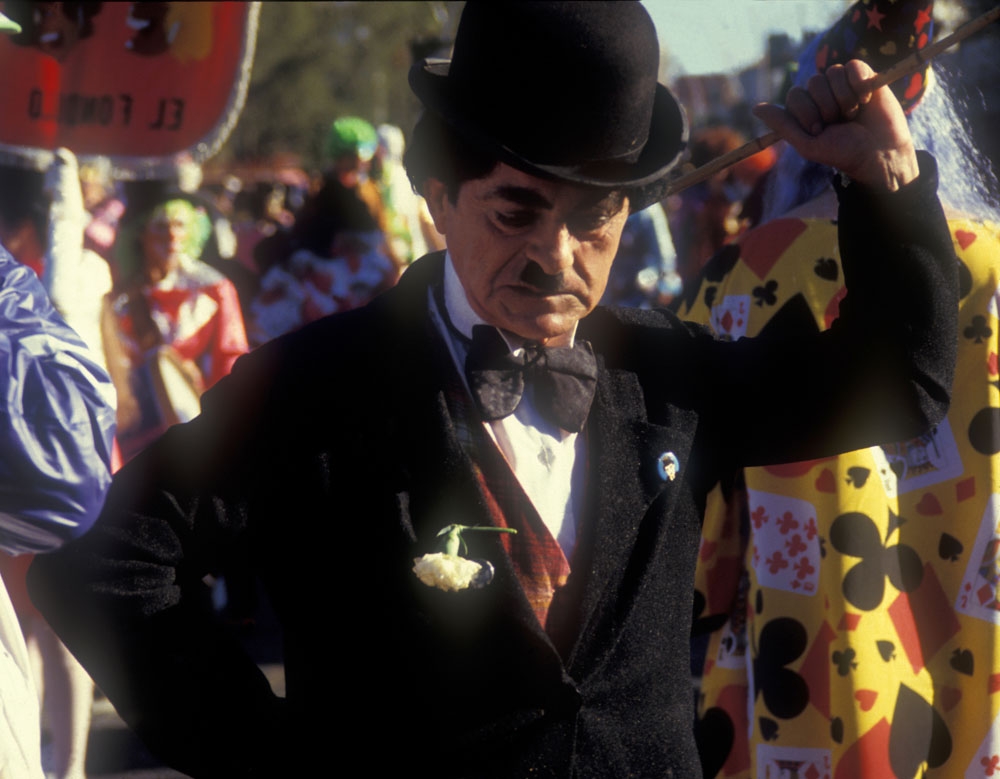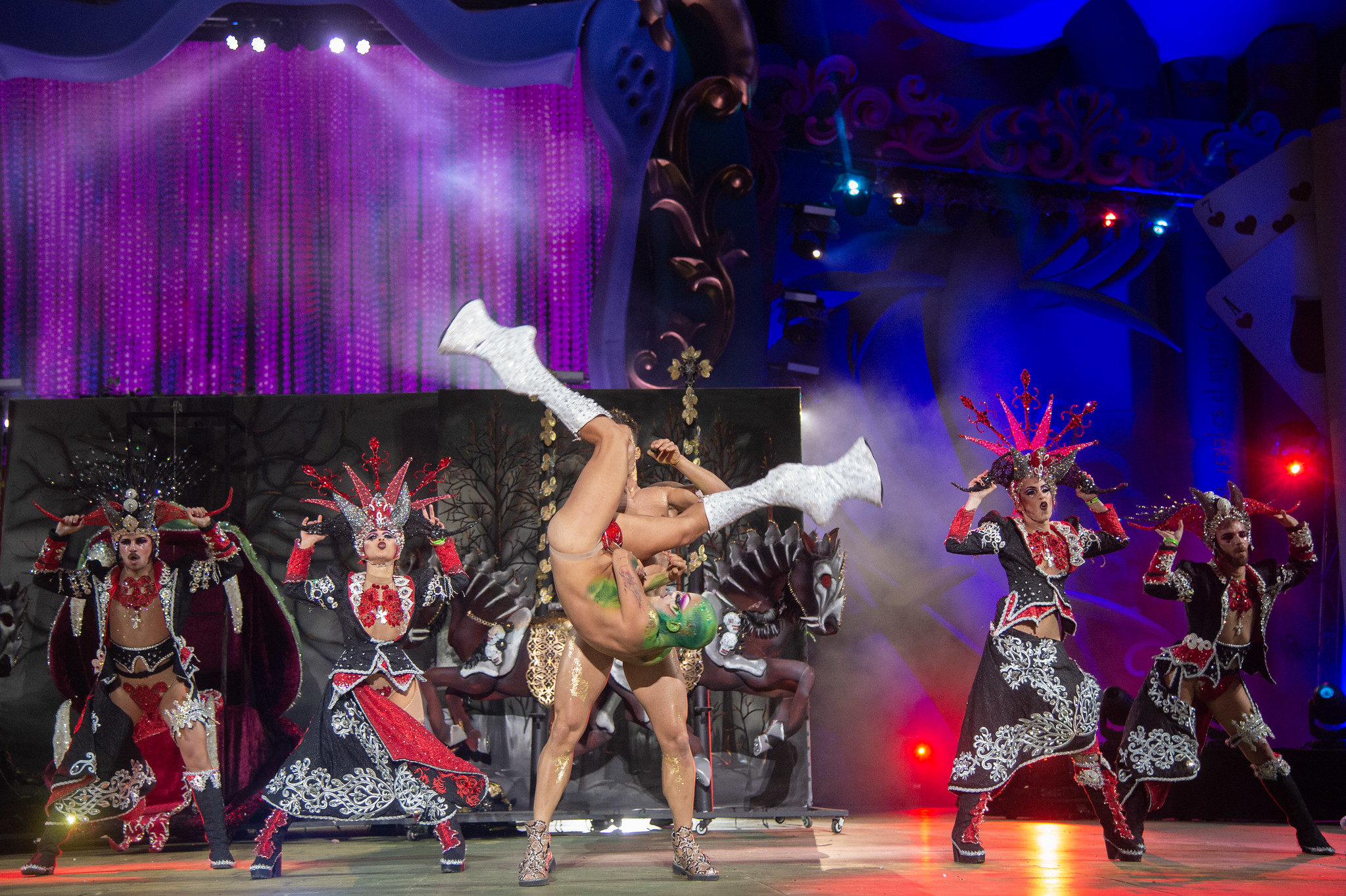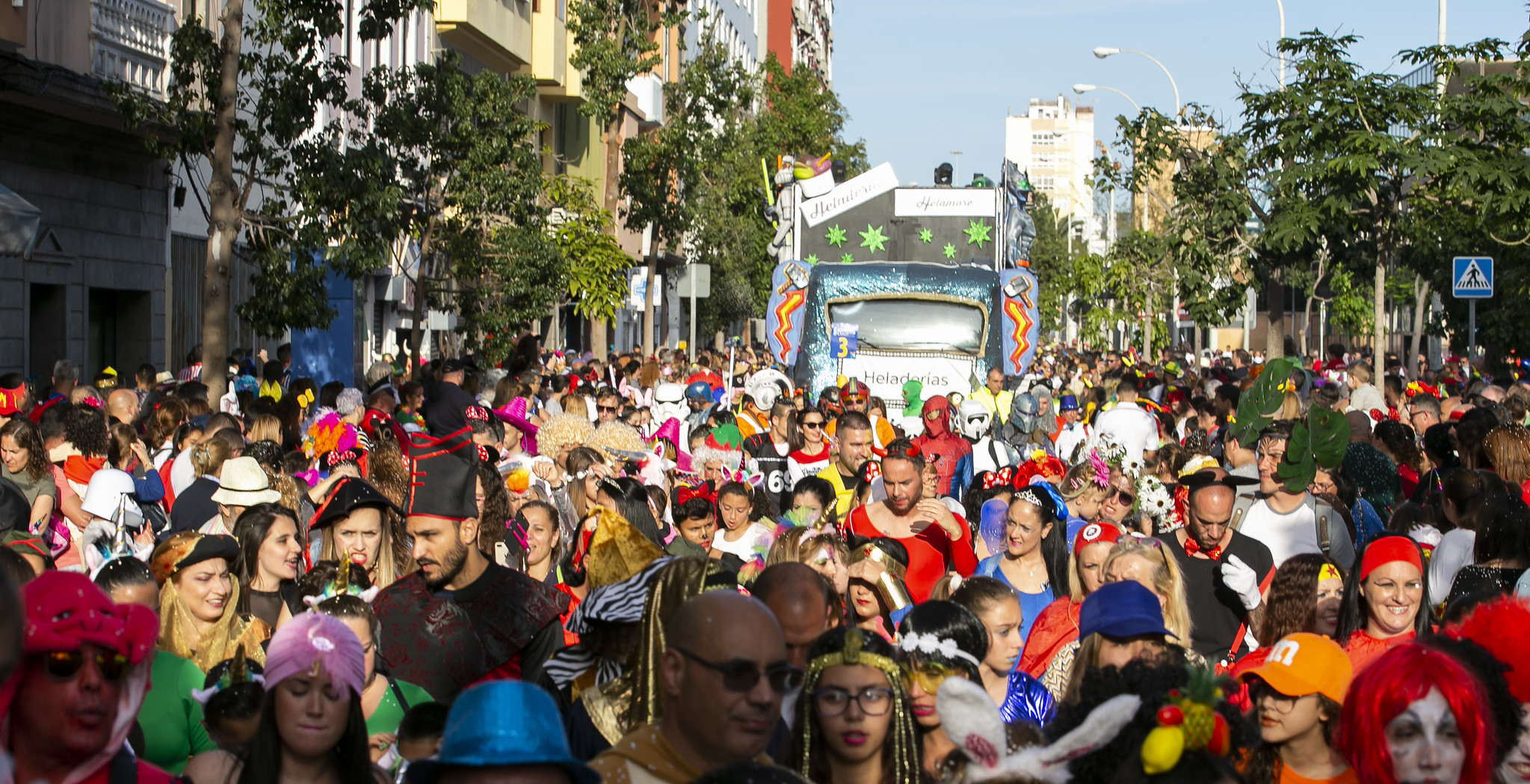Ru Paul, the Drag Race and the Las Palmas de Gran Canaria Drag Queen Gala
Las Palmas de Gran Canaria, 14 March 2022. In the Drag Queen world of images, there’s no shortage of clichés or classic references. Some of these, from the last century, such as ‘The Adventures of Priscilla, Queen of the Desert’ (Stephan Elliot, 1994), now occupy a place in the collective world of images. Others, however, are a current phenomenon, and have contributed to bringing the Drag Queen phenomenon into the mainstream. This is the case of RuPaul’s Drag Race, which since 2009 has combined competition and reality television to become a point of reference on the small screen, on the Logo and VH1 channels. All of this, of course, in the hands of Ru Paul, the diva and star whose initiative has increased the impact on audiences even more.
The brainchild has grown and grown, with the extension of the franchise. In 2021, Drag Race España premiered on Atresplayer (with, by the way, a homegrown Drag Queen from the Las Palmas de Gran Canaria Carnival: Drag Vulcano). It’s a talent show with no apparent curbs. But, where was it dreamed up? Well, perhaps if we follow the trail of Ru Paul just before 2009, we might find some interesting information.
In 2008, one year before Drag Race’s explosion on the scene, Ru Paul was performing… in the Las Palmas de Gran Canaria Carnival Drag Queen Gala. Is there a possibility he found inspiration in this contest? Given the combination of the diva’s commercial instinct, the impact on the star of facing Santa Catalina Park, and the emotion that the Gala usually causes in new visitors, it wouldn’t be surprising. So, it’s worth bearing that 2008 show in mind.
For the time being, the connections continue to intertwine: Supremme De Luxe, Drag Race España’s presenter, will also be one of the hosts of the 2022 Las Palmas de Gran Canaria Carnival Drag Queen Gala. These are ties which seem to get tighter and tighter over time.
Photos of Ru Paul in the 2022 Las Palmas de Gran Canaria Drag Queen Gala.
A Carnival talent show will decide the theme for the upcoming fiestas in Las Palmas de Gran Canaria
In a year without fiestas, Las Palmas de Gran Canaria is already working on the next Carnival, hopeful to enjoy it once again in 2022. Each year, the city organises the fiesta around a central theme. These have been, for example, The Eternal Spring of Peace and Love, Magic and Fantastical Creatures, La Belle Epoque, Ancient Rome or A Night in Rio. It’s up to the public to choose their favourite option for the Carnival allegory. For the immediate future, there are three alternatives: Las Vegas, raising awareness to save Planet Earth, and Disco Pop.
In previous editions, the audience voted online during a specific period of time. On this occasion, the organisers have scheduled a TV show for 26 February, during which viewers will be able to cast their votes via SMS. The programme will start at 9.30 pm (Canary Islands time), and has been conceived as a kind of talent show, with the participation of Carnival’s main stars. It will be broadcast on the international channel of Televisión Española, as well as on Televisión Canaria and La 2.
“Imagina 2022” (“Imagine 2022”) is the name given to this show, which will turn the Gran Canaria Arena —home to Club Baloncesto Gran Canaria and the arena that hosted the 2014 World Basketball World Cup— into a spectacular Carnival set.
Murgas, comparsas, Queens and Drags will all shine their lights in this TV show, which will culminate with the result of next Las Palmas de Gran Canaria Carnival’s central theme.
Carnival Drag Queens take over TikTok
Las Palmas de Gran Canaria, 19 February, 2021. The Las Palmas de Gran Canaria Carnival makes their debut on TikTok under the handle @lpacarnaval and continues to consolidate an active presence on social media as well with international profiles: the Organisation keeps working hard to make it become a “Fiesta of International Tourist Interest” of Spain.
Not long ago did a social network called Musical.ly take over the homes of curious Grancanarian families with striking videos that appealed to the little ones. Shortly after, the Chinese company, ByteDance, transformed it into TikTok (Douyin, in China), just in time to become one of the leading digital platforms during lockdown in Spain.
At the height of its popularity, TikTok has attracted countless influencers and a great part of the general public. Among them, the Drag Queens of the Las Palmas de Gran Canaria Carnival and their fans.
According to a report prepared by the IAB Spain association last summer, TikTok was already the social network whose frequency of use had increased the most in Spain. As of today, the hashtag identifying the Las Palmas de Gran Canaria Carnival Drag Queens, #DragQueenLPGC, has more than ten million views on this platform.
In previous editions of the Drag Queen Gala, this hashtag managed to become national and global trending topic on Twitter and get the attention of thousands of followers year after year.
The new Las Palmas de Gran Canaria Carnival profile is only a few weeks old and in such a short time, and with the same name as on Facebook, Twitter, and Instagram, it has accumulated thousands of views, including more than 50,000 views of a video of the beginning of Drag Sethlas’s performance in the 2020 Carnival.
This 2021, a year without fiestas due to the crisis generated by the global COVID-19 pandemic, the Carnival remains very active on social networks both on the national and international profiles. These days the Organisation broadcasted a special TV programme “El Carnaval vive en tu corazón” (Carnival lives on in your heart) on Televisión Canaria last Monday, 15 February —an emotional review of the past, present, and future of the fiesta— and continues to share content related to the campaign #elcarnavalviveentucorazon (#carnivallivesoninyourheart), the photographic exhibition that has been set up in Santa Catalina Park and various memories of the fiesta’s history in the capital of Gran Canaria.
In any case, all of Carnival’s social media posts stress that in 2021 it is not possible to celebrate it like in past years, in line with the regulations in force to fight against the global pandemic and with an inevitable sense of social responsibility. Its digital activity has followed the premise of keeping the spirit of Carnival alive, supporting all the economic activity that is generated thanks to it, and underlining the need to take care of ourselves today in order to enjoy tomorrow.
The Tramp’s cameo in the Las Palmas de Gran Canaria Carnival
The real Chaplin died in December 1977: specifically, on Christmas Day. The universal filmmaker, comedian and writer left behind a halo of immortality on everything he had introduced to pop culture. Just a few months later, the Las Palmas de Gran Canaria Carnival dedicated its 1978 poster to the famous Little Tramp. It was the third year Carnival was celebrated after the Francoist dictatorship, so the Organisation’s gesture tapped into the spirit of openness and freedom to celebrate the fiestas even back then in those new beginnings.
Though, even before then, since 1976, this character began to appear on the Grancanarian capital’s streets during Carnival: that is, a skilled Chaplin impersonator, a man from Santa María de Guía (in the north of Gran Canaria) that soon acquired the nickname “Charlot del Carnaval de Las Palmas” (The Las Palmas Carnival Tramp). This man was Santiago García Díaz, one of the most famous characters in the history of the fiesta.
Don Santiago stayed faithful to Carnival year after year, always walking with The Tramp strut and moving his moustache comically. The Organisation even reserved a spot for him in Pablo Losa’s 2007 poster, an edition dedicated to La Belle Epoque.
Santiago García died shortly after the 2001 Carnival. His funeral was, as he wished, “a party full of carnival enthusiasts wanting to have fun”, with Carnival groups and party characters, all dressed up in costumes. Today, the city commemorates Don Santiago with a square named after him and a statue in the neighbourhood of Sansofé.
Images from the past to imagine the Carnival of the future
The Las Palmas de Gran Canaria Carnival is being put on mandatory probation this 2021. Yet another consequence of the COVID-19 pandemic. No celebrating the fiesta in the streets this year. Though, the organisation aims to keep the spirit of Carnival alive with several initiatives. And one of them is exhibiting memories of past celebrations: an expos that reminds us that Carnival lives on in our hearts and that we will enjoy it soon again in the future.
If we had to pick one place to represent the heart of the Grancanarian capital’s Carnival, that would be without a doubt Santa Catalina Park. Every year it welcomes the stage where all the champions of the several galas come up victorious: the Carnival Queen, Drag Queen or murga and comparsa contests, among others. This year, with no party to host, Santa Catalina holds a photographic exhibition with images of fellow Canarians enjoying past editions.
The expo is a collection of photos signed by prominent Canarian photo-journalists: Angel Medina G., Arcadio Suárez, Gerardo Ojeda, José Carlos Guerra, Juan Carlos Alonso, Nacho G. Oramas, Quique Curbelo, Sabrina Ceballos, Tato Gonçalves and Tony Hernández. All of them have made countless contributions to the press, agencies and the organisation itself. And they are great connoisseurs of how the celebration has developed throughout the years.
Photos: Tony Hernández
Carnival throughout the years: the city also dresses up for the occasion
Back in 1976, the Las Palmas de Gran Canaria Carnival could finally be celebrated openly, after being an underground fiesta during the almost four decades of the Francoist dictatorship, period in which they were forbidden. Gone were the days of the “Winter Fiestas” (Carnival’s undercover name) and the city began to get back into the festive spirit before the start of Lent.
During those first years, Carnival was above all a spontaneous celebration, the only organised event being the first Carnival Queen Galas at the Pérez Galdós Theatre. However, in the 80s the fiesta started taking over Santa Catalina Park with stages becoming more and more spectacular year after year. This became the venue for galas and, later on, for murga and comparsa contests. Throughout the years, the stage is decorated to completely embody each year’s official Carnival theme.
This, along with the celebration of 100th Anniversary of artist Néstor Martín-Fernández de la Torre’s birth back in 1986, Santa Catalina started dressing up for the Las Palmas de Gran Canaria Carnival in fantastic costumes: Gulliver’s Travels (1988), The Mayan Civilisation (1990) or Aladdin and the Magic Lamp (1994) and even Ancient Rome (1996), Ancient Egypt (2000), Mount Olympus (2008) or Magic and Fantastical Creatures (2018).
In recent years, Carnival’s theme has been chosen by the people, with an online voting system. Each year they give their verdict among the several themes the Organisation proposes. Though this 2021 the pandemic has also put a halt to this tradition, the city will dress up in its Carnival costume soon!
Carnival Themes and Stages
|
1987 |
100th Anniversary of Néstor Martín-Fernández de la Torre's birth |
|
1988 |
Gulliver's Travels |
|
1989 |
The Sea |
|
1990 |
The Mayan Civilisation |
|
1991 |
Mozart and Classical Music |
|
1992 |
Pegasus |
|
1993 |
A Unique Setting |
|
1994 |
Aladdin and the Magic Lamp |
|
1995 |
Cinema |
|
1996 |
Ancient Rome |
|
1997 |
Far East |
|
1998 |
Universal |
|
1999 |
The Grand Musical |
|
2000 |
Ancient Egypt |
|
2001 |
The Circus |
|
2002 |
The Caribbean |
|
2003 |
Rock and Roll |
|
2004 |
Out of Africa |
|
2005 |
Don Quixote |
|
2006 |
Latin Carnival |
|
2007 |
La Belle Époque |
|
2008 |
Mount Olympus |
|
2009 |
Pirates |
|
2010 |
Television |
|
2011 |
The Sea and Cultures |
|
2012 |
Comic Books |
|
2013 |
The Grand Masquerade Ball |
|
2014 |
Fantasy World |
|
2015 |
One Thousand and One Nights |
|
2016 |
Roaring 20s |
|
2017 |
Eternal Spring |
|
2018 |
Magic and Fantastical Creatures |
|
2019 |
A Night in Rio |
|
2020 |
Once Upon a Time... |
A pulse beating down the years: the origin and path of the Las Palmas de Gran Canaria Carnival
A pulse beating down the years: the origin and path of the Las Palmas de Gran Canaria Carnival
In 2021, the Las Palmas de Gran Canaria Carnival comes to a compulsory halt: the crises generated by the COVID-19 pandemic have prevented the celebrations for the first time since the Francoist dictatorship. The “fiesta”, however, is still alive in the heart of the city
In 2021, the Las Palmas de Gran Canaria Carnival comes to a compulsory halt: the crises generated by the COVID-19 pandemic have prevented the celebrations for the first time since the Francoist dictatorship. The “fiesta”, however, is still alive in the heart of the city. And in the heart of the organisers themselves, who are broadcasting constant messages on the digital sites this year, reminding everyone that the flame is still alight (although, of course, avoiding the celebrations not recommended by Public Health, and inviting us to remember previous editions). Why is this celebration so significant? So much so that it should be so sorely missed?
Well, Carnival goes practically hand in hand with the history of the Gran Canaria capital itself, which was founded in 1478. In the 16th century, we find the first references to masked dances (the first, in 1574 in the house of Canon Pedro León, on the occasion of the wedding of Matías Carrasco). On more characteristic dates, the constant flow of Italian visitors encouraged the organisation of these first Carnival festivities. In 1521 a group of people from Genoa promoted these first popular fiestas. The Carnival celebrations would continue to be held, in one way or another, throughout the following centuries.
In the 19th century, it was the institutions themselves which began to set up the first festivities, along with the popular cavalcades of floats. The Club Las Palmas, the Círculo de Amistad and the Círculo Mercantil were some of the bodies organising these events. Carnival came to occupy spaces in what are now the Pérez Galdós Theatre and the Gabinete Literario.
During the dictatorship, Carnival, then banned, dressed itself up as the Winter Fiestas. People rustled up disguises, which they would cover up with blankets or sheets until they got to the place where the clandestine celebration was to take place. People from the La Isleta quarter were particularly active in keeping this flame alive.
The tradition of Carnival was recovered in 1976. If continued to grow over time, bringing in its murga satirical performances and comparsa street bands and its iconic Gala Queen, contemporary events which have come to be a big feature of the 21st century programme: from the spectacular and famous Drag Queen Gala to the Dog Carnival or Body Painting, along with everything surrounding the children’s Carnival and its Queen, and the Grand Dame’s Gala. The cavalcades of floats have survived five centuries, a sign of a celebration which is the watchword for Las Palmas de Gran Canaria.
Photo credit: Canarian historical photographic archives. Gran Canaria Council. Fedac.
Sethlas: Once upon a time there was a Drag Queen who reigned in Santa Catalina Park
That was when Borja Casillas really entered into the role that has made him famous: as Sethlas, he put on a spectacular show, which drew several rounds of applause from the audience. As well as his staging, dancing and impressive costume, he performed several pirouettes, surprisingly demanding for a drag artist in his high platform soles. But he pulled it off to perfection, with his fantasy “Si la tentación es hermosa imagínate el pecado” (“If the temptation is beautiful, just imagine the sin”). Supported by an effective dance troupe, Sethlas ended to thunderous cheers from the crowd, the best possible endorsement.
The audience gave his show an enthusiastic reception, and the jury (Carnival experts, journalists… and the viewers themselves watching a gala broadcast worldwide) awarded Borja his second Carnival victory (he had already won in 2017). He will act once again as a symbol of the festivity (together with the Carnival Queen, Minerva Hernández), and is now part of the history of the Las Palmas de Gran Canaria Carnival.
The Royal Carnival Court parades on the streets
The great carnival parade par excellence is known as the Cabalgata and is planned from 5 pm onwards on Saturday 29. It will start from Castillo de La Luz, an old fortress where the islanders defended the city from buccaneers such as the British Drake and Hawkins, or the Dutch Van der Does. Over one hundred floats will leave the castle, decorated with in spirit of the 2020 Las Palmas de Gran Canaria Carnival theme “Once upon a time…” These colourfully decked-out floats will carry scores of dancing mascaritas (costumed carnival-goers) who’ll greet the cheering crowds all along the route towards San Telmo Park.
The Drag Queen will shine from the very beginning, hailed by the crowds as regent in the first ceremony in the company of the other drag contest finalists. Carnival Queen, Minerva Hernández, will also take the spotlight with her maids of honour, along with the Great Dame, Chari Alvarado, who was crowned queen of the senior category. And the final touch: the countless Carnival groups: murgas and comparsas that will sing and dance along the entire route towards Parque San Telmo to culminate in Santa Catalina Park for the last night – Noche de Carnival – and its concerts.
On the following day, Sunday 1 March, two parades are scheduled to leave the renovated boulevard of Mesa y López, one of the city’s main open-air shopping areas. The Children’s Parade starts at 5 pm, led by our little queen and her maids of honour. The parade ends at Mercado del Puerto, a unique gastronomical and leisure hub with striking architecture designed by Gustavo Eiffel, located at the far end of Las Canteras beach.
Finally, the Burial of the Sardine will start from Mesa y López at 7 pm. This symbolic funeral procession takes a huge mock fish to Las Canteras beach to burn it, accompanied by the Carnival Queen, Drag Queen and the Great Dame, along with all the Carnival groups and hoards of widows that weep inconsolably at the end of the celebrations. We say goodbye to this year’s festivities with the smouldering sardine evaporating out at sea, as dazzling fireworks light up Las Canteras to announce that, once upon a time…there was a fairy-tale Carnival in Las Palmas de Gran Canaria.
The Carnival Team is working on rescheduling events, pending reports from Safety and Emergencies
The Carnival Team is working on rescheduling events, pending reports from Safety and Emergencies
The organisation will update the programme on lpacarnaval.com in its various versions in other languages, and will give information constantly on its Facebook and Twitter social profiles: @LpaCarnival
Las Palmas de Gran Canaria, 24 February, 2020. With the ongoing alert announced on the evening of Saturday, 22 February, by the Canary Island Government General Directorate of Safety and Emergencies, due to wind and sand haze in all the islands, the Las Palmas de Gran Canaria Carnival department will offer constant information on its international profiles in Facebook and Twitter: @LpaCarnival. It will also update the programme event by event on the corresponding tab in the lpacarnaval.com website, where it will give information about the relocation of events, as long as the weather situation allows the events to be held.
For the time being, the team will continue to work on preparing a schedule which will allow the maximum number possible of the events to be held. This schedule expects, as long as the alert is deactivated and the conditions are favourable, to hold the remainder of the Drag Queen Shortlisting event – with performances by the eight drag queens who could not perform last Saturday – today, Monday 24, and the Drag Queen Gala on Friday 28. For the time being, the programme cancels the traditional carnival scheduled originally for Monday, 24 February in the dual carriageway in the Centre.
The holding of the scheduled festivities is still subject to the changing weather conditions and to the reports and technical recommendations of Safety and Emergencies.

